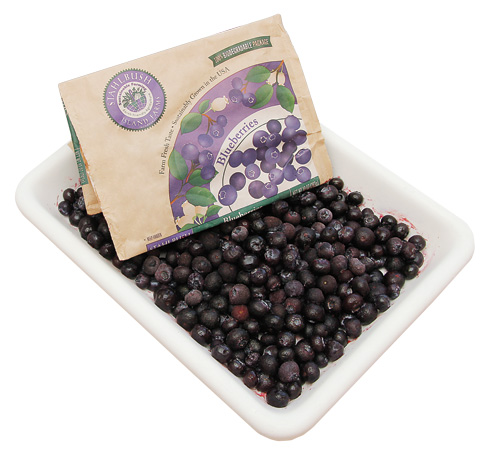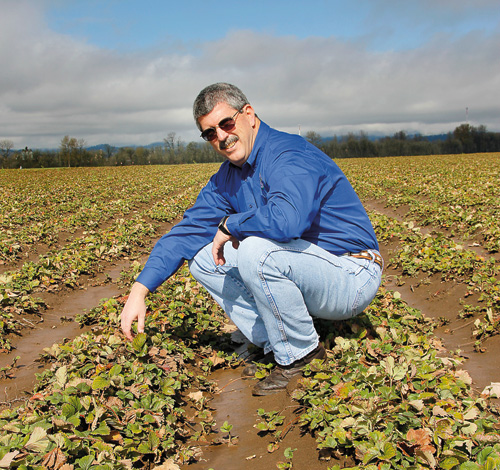 Bill Chambers, president of Stahlbush Island Farms, has a simple explanation for why he has adopted so many innovative technologies and practices in service of sustainable agriculture.
Bill Chambers, president of Stahlbush Island Farms, has a simple explanation for why he has adopted so many innovative technologies and practices in service of sustainable agriculture.
By Linda Baker
 |
Bill Chambers is president of Stahlbush Island Farms, a sustainable farming operation that averages double-digit annual growth.// Photo by Alexandra Shyshkina |
Bill Chambers, president of Stahlbush Island Farms, has a simple explanation for why he has adopted so many innovative technologies and practices in service of sustainable agriculture. “Work should be fun and interesting, and doing new things makes work fun and interesting,” says Chambers, 54, who grows and processes fruits, vegetables, grains and legumes on 5,000 acres in Corvallis. “That’s the source of our core value of innovation.”
In 1997, Stahlbush became one of the first farms in the country to be certified sustainable by the Food Alliance. Twelve years later, the family-owned company turned agricultural waste into energy with the first biogas plant of its kind in North America. And in 2010, Stahlbush released the first 100% biodegradable freezer bag.
Today Chambers and his wife, Karla, continue their legacy of environmental innovation. Aiming to achieve a “carbon-negative footprint,” their latest acquisitions include a high-speed disc for preparing the soil and a computer-controlled weeder. The new pieces of equipment, which will debut this spring and summer, don’t sound particularly sexy. Yet both reflect Chambers’ focus on cutting-edge, chemical-free mechanical and computer-based approaches to agriculture.
 |
The biogas plant at Stahlbush Island provides electricity for about 1,100 homes, nearly twice what the farm and plant use yearly. The $10 million project took 14 months to complete. Blueberries are the farm’s biggest seller.// Photo by Alexandra Shyshkina |
A traditional disc runs at 4.5 mph; the faster 12 mph Amazone Catros Disc will eliminate several passes in the field, which not only saves time and money but is also better for the soil. “Every time you till the soil, you’re basically wrecking the houses where insects live,” Chambers says. “So the more you can reduce that tillage the better.” Common in Europe, the high-speed disc will be one of the first in use on the West Coast, he says. The new weeder, from Garford Farm Machinery in England, yields similar benefits. With the help of a computer-controlled camera, the machine will weed nine rows at a time at high speed and very close accuracy, says Chambers.
Neither piece of equipment comes cheap. The disc is about $58,000 and the weeder about $50,000. High capital costs can deter investment in more efficient technologies and systems, says Chambers, who was the first in Oregon to use a satellite-guided tractor. “But most everything in agriculture you have to take the long view.” As energy costs go up, he says, many new technologies will eventually pay for themselves.
“We are always trying to be more efficient and come up with better ways to preserve quality or make our product better,” says Chambers, describing his pragmatic approach to innovation. Be it a biogas plant or high-tech automated weeder, Chambers says his desire to adopt new technologies arises from “walking around the farm and solving problems. I’ve always been a curious kid.”


